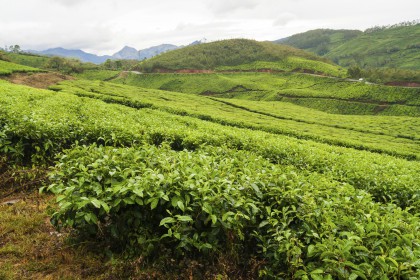A comment on the Indian economy: Monsoon season
Last week the International Monetary Fund (IMF) retained India's growth projections for 2016-17 at 7.5 per cent, confirming its status as the world's fastest-growing major economy. At the same time, IMF cut global expansion estimates.

Tea Plantations in Munnar
India’s growth story is impeccable in terms of timing. Amid weakening worldwide recovery, India is looking increasingly attractive as a destination for trade, investment, business and innovation. According to the IMF, India’s 2016-17 growth would be higher than China’s by 1.3 percentage points.
Monsoon season predictions
Recent developments are positive. The India Meteorological Department has forecasted above average monsoon rainfall this year, after two successive years of deficient rainfall.
Employment in agriculture accounts for 50 per cent of total employment in India and nearly 60 per cent of the total cultivated area in the country is rain fed, the World Bank has highlighted. The monsoon forecast therefore has huge economic and political impact.
The forecast has already buoyed stock markets and India’s BSE Sensex gained 481 points in the week of 13 April. Hopes of robust monsoon has strengthened investors’ sentiments with even overseas holdings of rupee-denominated government and corporate notes rising by £ 174 million ($261 million) in three days.
While agriculture-related stocks jumped on better-than-normal monsoon forecast, hopes of revival in rural demand boosted other stocks.
This is not surprising as seven out of every 10 Indians live in villages, as a result, rural demand is key to India’s growth. FMCG products’ household consumption in rural India grew at 5.4 per cent over the previous year, data shared by market research agency IMRB has shown. During the same period, urban household FMCG consumption grew only 2.9 per cent. Good monsoons will raise rural income, generate demand for a wide spectrum of goods and services, and boost economic growth – hence the euphoria.
India faced a drought in three of the past seven years and we hope that the central government’s focus on irrigation and rural development in this year’s budget will bring an end to the ‘policy drought’ in this sector. Irrigation is ‘strictly’ a state subject, and so it is important that these initiatives and policies are implemented at the ground level.
More good news
Meanwhile, India’s factory output grew two per cent in February due to strong performance by mining and electricity sectors, and retail inflation moderated further in March.
Earlier this month, RBI reduced its policy rate by 0.25 per cent to 6.5 per cent – its lowest level in more than five years. The industry, however, wants further rate cuts from RBI to boost investment. RBI has lowered its rate by 1.5 per cent cumulatively since January 2015, yet Indian banks have lowered their own lending rate only by 0.25-0.5 per cent. The good news is that Raghuram Rajan has indicated, he is open to more rate cuts going forward provided the monsoon is on track and inflation is in control. If the rains are on track, food availability would improve further and inflation will be in control.
On the other hand, the outlook for crude oil prices is uncertain again after the meeting of Organisation of Petroleum Exporting Countries (Opec) and non-Opec members this weekend where they failed to reach an agreement on production freeze. How this will impact global recovery and India is something to keep an eye on. Ultimately, the supply and demand dynamic will play a key role.
Update economic data, easing retail inflation, a recovery in industrial production, good rain forecast and the prospect of further cuts by RBI means India continues to shine.

 By Richard Heald
By Richard Heald 





